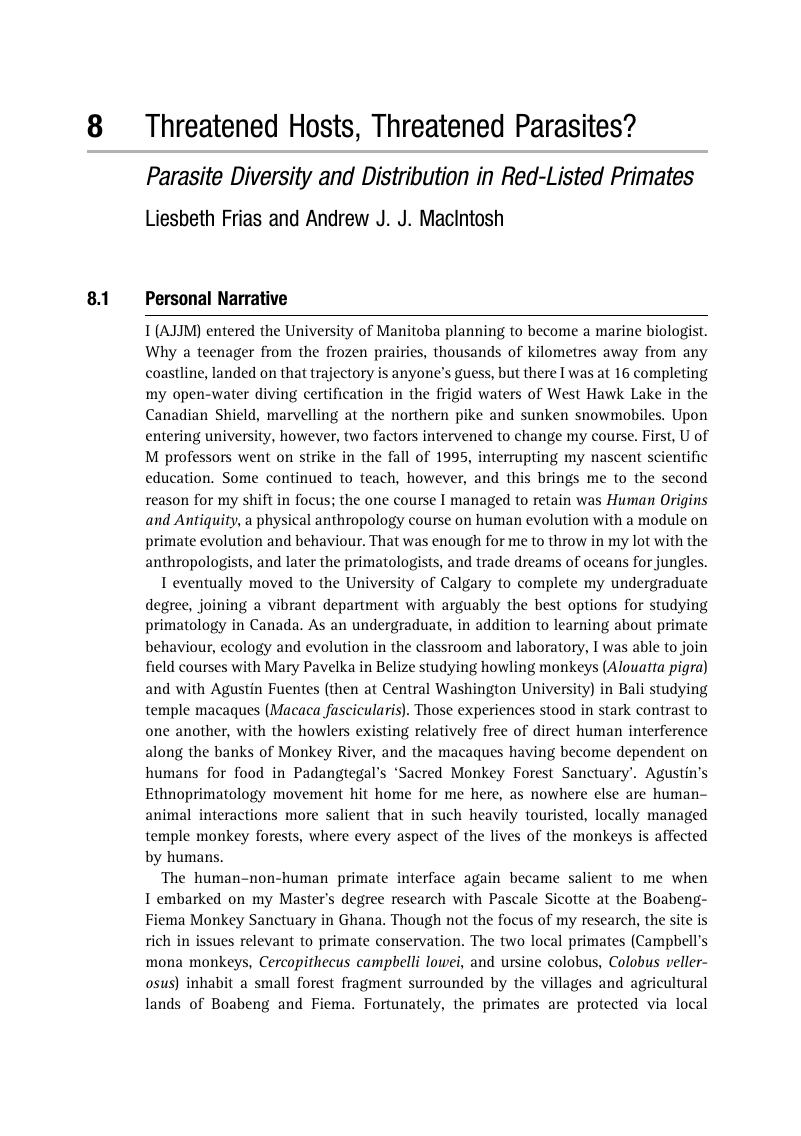Book contents
- Primate Research and Conservation in the Anthropocene
- Cambridge Studies in Biological and Evolutionary Anthropology
- Primate Research and Conservation in the Anthropocene
- Copyright page
- Dedication
- Contents
- Contributors
- Foreword
- 1 Changing Priorities for Primate Conservation and Research in the Anthropocene
- Part I The Human–Non-human Primate Interface
- Part II Habitat Alteration in the Anthropocene
- 6 The Effects of Selective Logging on the Habitat Use of the Annamese Silvered Langur (Trachypithecus margarita) in Northeast Cambodia
- 7 The Immediate Impact of Selective Logging on Rwenzori Angolan Colobus (Colobus angolensis ruwenzorii) at Lake Nabugabo, Uganda
- 8 Threatened Hosts, Threatened Parasites?
- 9 Lemurs in Fragmented Forests
- 10 Proboscis Monkey Conservation
- Part III Climate Change in the Anthropocene
- Index
- References
8 - Threatened Hosts, Threatened Parasites?
Parasite Diversity and Distribution in Red-Listed Primates
from Part II - Habitat Alteration in the Anthropocene
Published online by Cambridge University Press: 25 January 2019
- Primate Research and Conservation in the Anthropocene
- Cambridge Studies in Biological and Evolutionary Anthropology
- Primate Research and Conservation in the Anthropocene
- Copyright page
- Dedication
- Contents
- Contributors
- Foreword
- 1 Changing Priorities for Primate Conservation and Research in the Anthropocene
- Part I The Human–Non-human Primate Interface
- Part II Habitat Alteration in the Anthropocene
- 6 The Effects of Selective Logging on the Habitat Use of the Annamese Silvered Langur (Trachypithecus margarita) in Northeast Cambodia
- 7 The Immediate Impact of Selective Logging on Rwenzori Angolan Colobus (Colobus angolensis ruwenzorii) at Lake Nabugabo, Uganda
- 8 Threatened Hosts, Threatened Parasites?
- 9 Lemurs in Fragmented Forests
- 10 Proboscis Monkey Conservation
- Part III Climate Change in the Anthropocene
- Index
- References
Summary

- Type
- Chapter
- Information
- Primate Research and Conservation in the Anthropocene , pp. 141 - 164Publisher: Cambridge University PressPrint publication year: 2019
References
- 2
- Cited by



